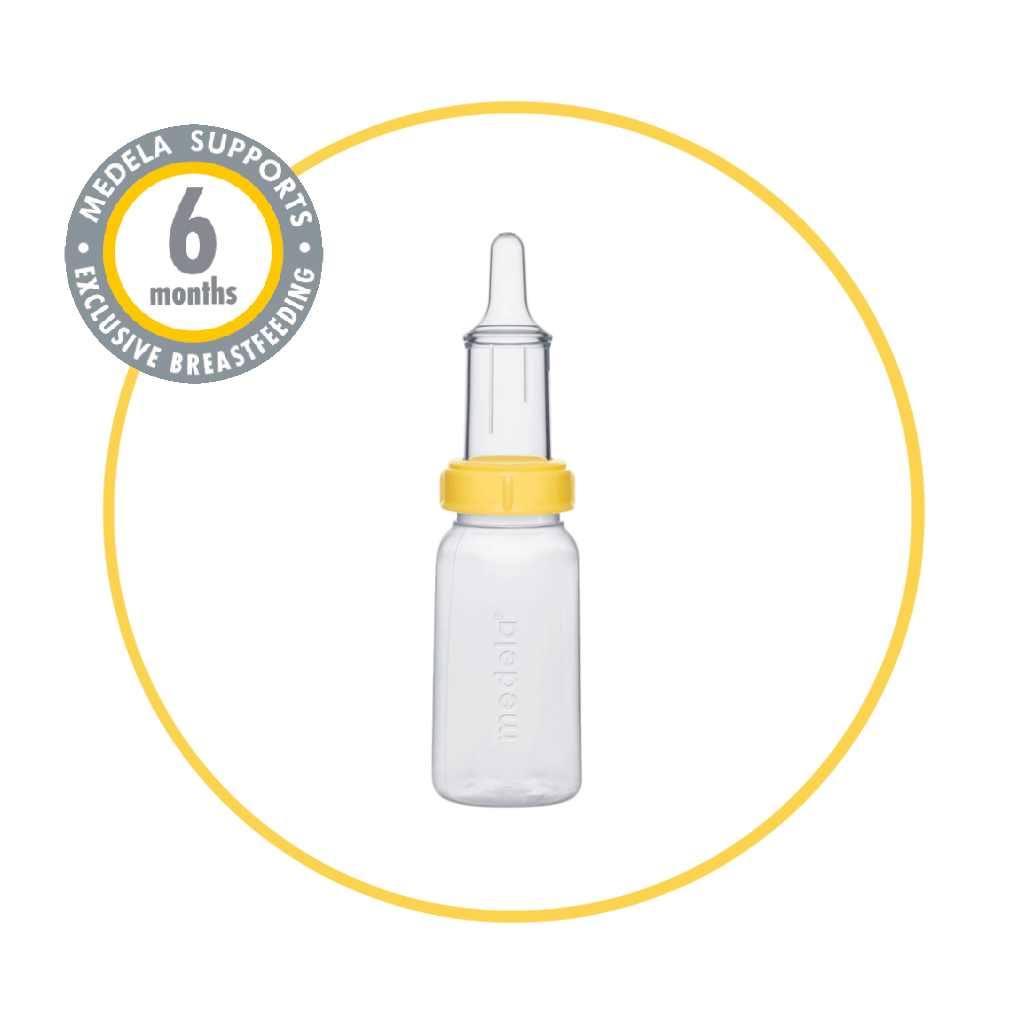If your baby has a condition that makes breastfeeding difficult, such as a cleft lip and palate or a disability or neurological condition, the Medela SpecialNeeds Feeder may be the solution. Such conditions may mean your baby is unable to create a vacuum to drink your milk from the breast, so the SpecialNeeds Feeder allows him to use gentle compression instead.
How the Medela SpecialNeeds Feeder works
Instead of a standard teat, the Medela SpecialNeeds Feeder has a longer, slimmer teat made of ultra-soft silicone. There’s a slit valve at the tip that opens when your baby makes the slightest compression to feed and closes when he pauses, so he isn’t overwhelmed by your expressed milk.
The line-mark on the teat helps you find the best position for feeding your baby. When your baby compresses the teat, the milk will flow at different rates depending on the teat’s position. You can also gently squeeze the teat to help your baby get more milk. A one-way valve between the feeder’s bottle and teat allows you to safely control the flow and stops air getting in.
For the smallest mouths, a Mini SpecialNeeds Feeder teat is available. Both the standard and mini versions are reusable if cleaned and sanitised according to instructions.
When to use a SpecialNeeds Feeder
For some babies, using a special feeder such as the Medela SpecialNeeds Feeder means they no longer need to be tube-fed. If your baby can latch on but doesn’t have the strength or energy to take all the milk he requires from your breast, it can be an effective way of topping up his breastfeeds with expressed milk to meet his nutritional needs.
This is important, because many babies with special needs can be discharged from hospital if they’re able to get the milk they need to grow properly. So a SpecialNeeds Feeder could make all the difference between your baby staying in hospital and going home.
If your baby needs surgery, the Medela SpecialNeeds Feeder can also be an effective way of feeding him in the short term if he’s too sore or weak to breastfeed after an operation.
Using the Medela SpecialNeeds Feeder
If you think you or your baby may need support with feeding, seek advice from a lactation consultant or breastfeeding specialist. They may advise you to use the SpecialNeeds Feeder. If they do, ask them to supervise your first couple of feeds using the device. They can also advise you on the amounts of expressed milk to give.
Your baby might only need the SpecialNeeds Feeder for a little while. As he grows and becomes stronger, he may learn to take your milk directly from your breasts. Even if the feeder works well for you, it’s always worth continuing to offer the breast at every feed.
Medela has a range of other products to help make feeding breast milk to babies with special needs possible, including a supplemental nursing system and soft cup – visit our breast milk feeding page to find out more.






















